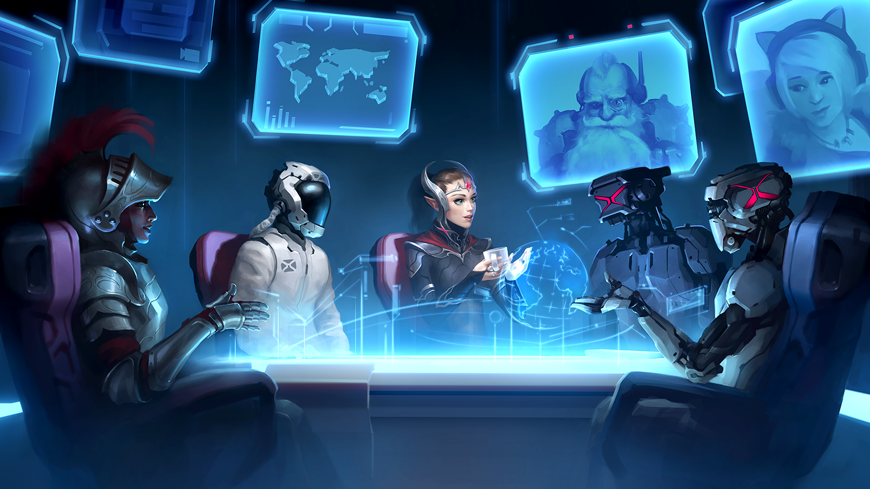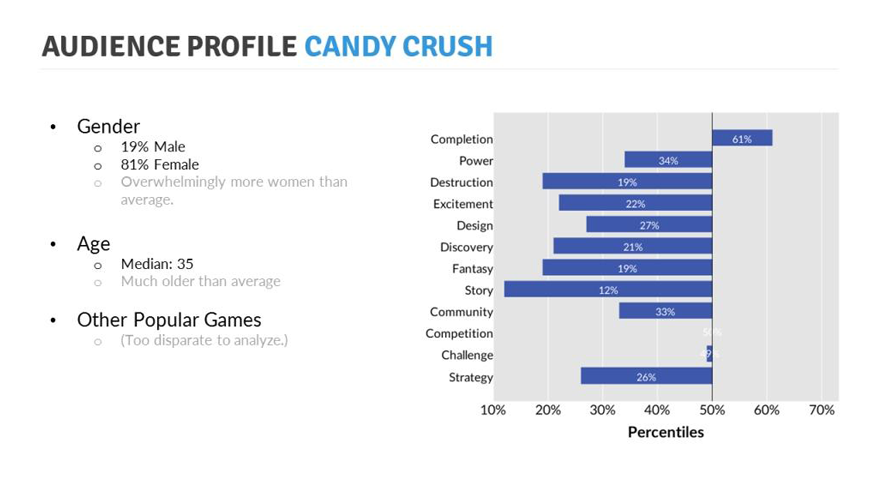Play smarter: Boost your game's success with targeted audiences
December 8, 2023•6 min
Competing in an oversaturated market can make it difficult for your game titles to earn the recognition they deserve, especially if you’re a newer studio. There are about 2.7 billion active gamers right now, with 3.8 billion projected by 2026. Targeting the appropriate audiences is crucial to your game's overall commercial success. By identifying which players suit your game, you can optimize production, create more effective marketing campaigns, and save costs.
With so many potential players gaming across various platforms, like mobile, PC, or the web, it can feel overwhelming to narrow down your audience. This article will help you discover the key benefits of audience targeting, practical tips for identifying your ideal players, and actionable steps to get started.

 While there are multiple ways to start segmenting your audience, Mark Sherrington's 5W method is straightforward and gives a good idea of how to begin. Ask yourself the following questions:
While there are multiple ways to start segmenting your audience, Mark Sherrington's 5W method is straightforward and gives a good idea of how to begin. Ask yourself the following questions:
 Your studio's ability to find and reach the right players is a process. But the benefits of doing this work early and building it into your game's development and marketing strategies increase the potential for revenue and overall commercial success.
Your studio's ability to find and reach the right players is a process. But the benefits of doing this work early and building it into your game's development and marketing strategies increase the potential for revenue and overall commercial success.
The benefits of defining your target audience
Finding the right player audience can help limit issues that may arise during your game's development and make your future marketing campaigns more successful. Game development is time-consuming and costly. Knowing which people are most likely to be interested in your type of game will allow you to better determine which game mechanics, style, and marketing campaign strategies will be most effective. Your target audience during production Understand what drives your audience and which mechanics they like and dislike to increase your chances for success. Potential players won’t always appreciate you taking risks with your development. Focusing on critical elements while abandoning unnecessary experiments or add-ons will help your studio finish games faster and spend less money. Attaching hardcore mechanics to a simple casual game to "expand the audience" is a sure way to lose casual game fans. Fans of Call of Duty are less likely to enjoy solving logic puzzles in the middle of battles, even if the additional game mechanic could be considered innovative. You can still play around with new ideas, but any additions should be calculated and based on your audience to boost sales and engagement. Your target audience post-launch Your ability to acknowledge who your audience is and where they fit into the larger gaming community will benefit your commercialization strategy. Find out where players get their information before you set up your marketing campaigns. If your audience includes young people 16 to 25, trying to influence them through TV or print media when most of this demographic uses social media networks can cost you needless resources. Along the same lines, hardcore gamers likely stay up-to-date with game media outlets, while mid-core and casual players might get their tips through an influencer. Evaluate your competitors and use this information to craft your distinct brand image. This will help you minimize costs by using already proven tactics. For more information on the best ways to reach your target audience, view our companion pieces on preparing marketing graphics and preparing video marketing materials.
How to define your target audience
It's clear that in the long run, defining your audience has major benefits to your studio’s bottom line and can increase your game's commercial success. Below, we've defined the three focus areas to help you find the right audience for your games: data gathering, audience segmentation, and analysis. Data gathering Audience research, or collecting the correct data, is the first step once you have a game concept and general design for your game. There are three ways to approach data collection, each with its own pros and cons. Your studio size and budget will determine which path is right for you.- Order an analytics report Companies like SuperData or Newzoo are great options if your company has the funding to outsource the work. This thorough, reliable data often provides more than enough information to determine short and long-term planning.
- Collect data in-house You can always internally research your competitors, similar products, and audience preferences. This will take more time and involve analyzing market activity and press references, but it can save money if you're on a tight budget.
- Hire experienced consultants A middle ground between the above options is to partner with a marketing consultant. These professionals know where to source data and can provide valuable insights, all with little input from you. Hiring someone reliable will cost money, but it's still less expensive than working with a large analytics company.
 While there are multiple ways to start segmenting your audience, Mark Sherrington's 5W method is straightforward and gives a good idea of how to begin. Ask yourself the following questions:
While there are multiple ways to start segmenting your audience, Mark Sherrington's 5W method is straightforward and gives a good idea of how to begin. Ask yourself the following questions:
- What type of game are you selling?
- Who are you trying to entice to buy your game?
- Why should potential players buy your game?
- When is the best time to sell your game for maximum profitability?
- Where will players learn about your game?
- Geographic location. Gaming preferences differ by region. Pay attention to where your players are located. This can give you valuable insights into how they interact with your brand in different places around the world.
- Socio-demographics. Your target audience's age, income, education, and other characteristics is vital information to help you create personalized and targeted marketing messages that resonate with them.
- Tolerance for innovation. Do your target players want something new? Pay attention to how players think and feel about the game and about themselves within it. This will help you craft marketing messages that resonate with their attitudes, and help build a stronger emotional connection with them.
- Engagement and commitment. Are they hardcore gamers? Casual? Somewhere in between? Think about when and how often your target audience interacts with games, so you can reach players when, and where, they are most receptive.
- Spending capacity. How much are users willing to pay for something? Understanding how much your players are willing to spend helps you fine-tune your in-game monetization strategy and offer them things they're most likely to buy.
 Your studio's ability to find and reach the right players is a process. But the benefits of doing this work early and building it into your game's development and marketing strategies increase the potential for revenue and overall commercial success.
Your studio's ability to find and reach the right players is a process. But the benefits of doing this work early and building it into your game's development and marketing strategies increase the potential for revenue and overall commercial success.Featured articles
Contact us
Talk to an expert
Ready to maximize revenue opportunities? Reach out to our experts and learn how to start earning more and spending less.